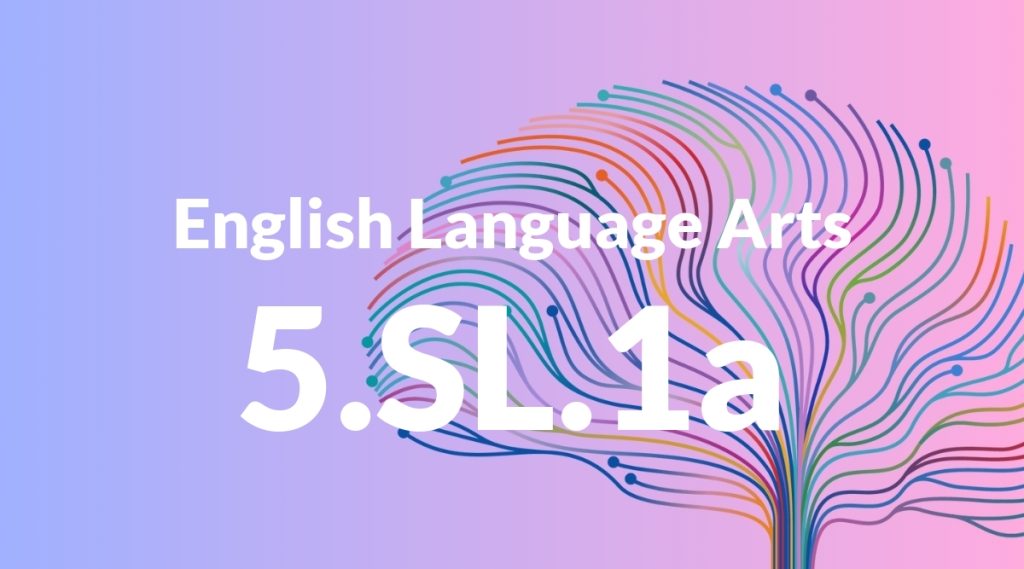Standard: 5.SL.1a – Come to discussions prepared, having read or studied required material; explicitly draw on that preparation and other information known about the topic to explore ideas under discussion.
Grade level: Grade 5
Subject: English Language Arts
Domain: Speaking & Listening
Teacher Overview
This standard emphasizes the importance of preparation for discussions. It ensures that students come to discussions ready to contribute meaningfully, having read or studied the required material. This preparation allows them to draw on their knowledge and explore ideas in depth, fostering a richer and more productive dialogue. Students should have basic reading comprehension skills and the ability to summarize key points from texts. They should also be familiar with basic discussion etiquette and active listening techniques.
After mastering this standard, students will develop advanced critical thinking and analytical skills. They will be able to engage in deeper, more meaningful discussions and debates, and effectively communicate their ideas and arguments.
Common Misconception 1
A common misconception is that simply showing up to a discussion is enough. This is incorrect because meaningful contributions require a solid understanding of the material being discussed.
Intervention 1
Use role-playing activities to demonstrate the difference between prepared and unprepared participants. Highlight how preparation leads to more insightful contributions.
Common Misconception 2
Another misconception is that prior knowledge alone is sufficient for discussions. This is incorrect because new material often provides critical context and information needed to fully understand the topic.
Intervention 2
Encourage students to connect new information with their prior knowledge. Use graphic organizers to help them integrate new material with what they already know.
Prerequisite Knowledge
Students should have basic reading comprehension skills and the ability to summarize key points from texts. They should also be familiar with basic discussion etiquette and active listening techniques.
Subsequent Knowledge
Students will develop advanced critical thinking and analytical skills. They will be able to engage in deeper, more meaningful discussions and debates, and effectively communicate their ideas and arguments.
Instructional Activities
- Role-playing different discussion scenarios
- Creating graphic organizers to connect new and prior knowledge
- Participating in mock debates
- Group discussions on assigned readings
- Peer review and feedback sessions




